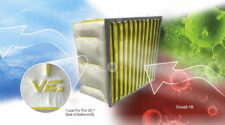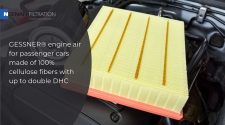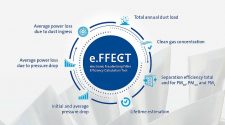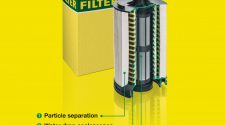At the time of this writing, the CDC predicts 135,000 deaths in the U.S. from COVID-19. McIlvaine has calculated the cost in terms of life quality reduction for those sickened, as well as those dying, plus healthcare costs at $58 million per death. The result is a $7.8 trillion cost, not including lost economic activity. However, the number of deaths can be substantially reduced with a relatively modest investment in filtration.
There is mounting evidence that extensive transmission of COVID-19 takes place through aerosols, which can penetrate inefficient masks and easily move around partitions. Many experts now believe that filters and unidirectional air flow, rather than partitions, should be used. Also, high-efficiency masks, rather than six feet of distancing, should be the foundation of the response.
Meat processors have received guidance from the CDC to install partitions and to wear some type of cloth mask. Based on the latest evidence, this is not good advice.
Fan filter units (FFUs)
Fifty years of cleanroom design has resulted in consensus that HEPA filtration and laminar downward or uni-directional air flow are the ways to deal with particles smaller than five microns. Air pollution control experts can cite endless examples of small particles which travel around the globe. No amount of partitioning would restrict them.
Technology has been developed to deal with COVID-19 in a safe and cost effective manner by cleaning the air and directing the flow so it is not from person to person. The voting line with six foot distancing in Milwaukee, Wisconsin during last month’s primary election is a good example of what not to do. A slow sequence of people moving in a straight line creates a lineal viral cloud, so people in the rear are continually walking into the cloud generated by their predecessors. In Milwaukee seven COVID-19 cases were directly tied to the primary voting, and the entire Wisconsin caseload rose noticeably.
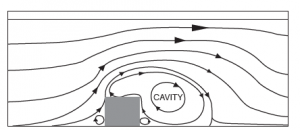
One takeaway is that air flow direction is very important. If a cloud moves from one meat packer under or around a partition to another worker, the partition has no positive effect and in fact may create turbulence and longer suspension of the particles. In the diagram above, envision each worker in a cavity area caused by the partition where the virus keeps circulating.
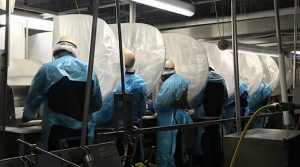
There are ceiling-mounted Fan Filter Units (FFUs), which will provide laminar flow of HEPA-filtered air. If placed properly, they can provide laminar flow of clean air downward. This will be the answer for not only meat processing plants, but for a wide variety of establishments.
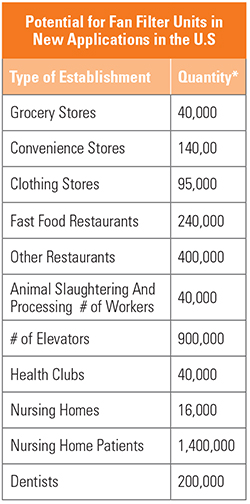
The traditional market for HEPA filters and fan filter units has been for cleanrooms and hospital isolation rooms. What is now needed is investment in fan filter units for a variety of applications beyond cleanroom and hospital scenarios.
Studies of a restaurant in Southern China showed that social distancing was irrelevant. The air conditioner created a virus cloud which impacted all diners in its flow pattern. So tables nearby the transmitter, but not in the flow pattern, escaped while those at some distance in the flow pattern ended up with numbers of COVID -19 cases. The solution is the fan filter unit and unidirectional air flow away from people.
Every checkout counter and big box store is another candidate. The aisles of stores can also be supplied with laminar air flow ceiling-mounted FFFUs.
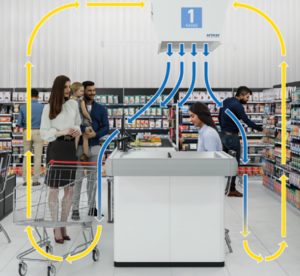
Masks
The guidance to meat processing workers or the general population to wear a cloth mask (not an N95 mask) because there will not be enough for healthcare workers is also obsolete advice. The production of N95 masks has increased by orders of magnitude in recent months. The shortage of meltblown media is being met in several ways, including rapid construction of new media lines and development of nanofiber membranes as a washable alternative. Various decontamination methods for masks are now available.
Everyone should be wearing an N95 efficiency mask. The new evidence of transmission by small aerosols, including Italian research which found coronavirus on air pollution particles in the Lombardy region means that what is needed is to remove particles smaller than 3 microns with high efficiency down to 0.3 microns and even 0.1 microns.
Filtration through masks and fan-filter units will result in many fewer deaths and is highly justified on a true cost basis.
For more information on McIlvaine’s “Coronavirus Technology Solutions” report, see http://bit.ly/mcilvaine-coronavirus-database.


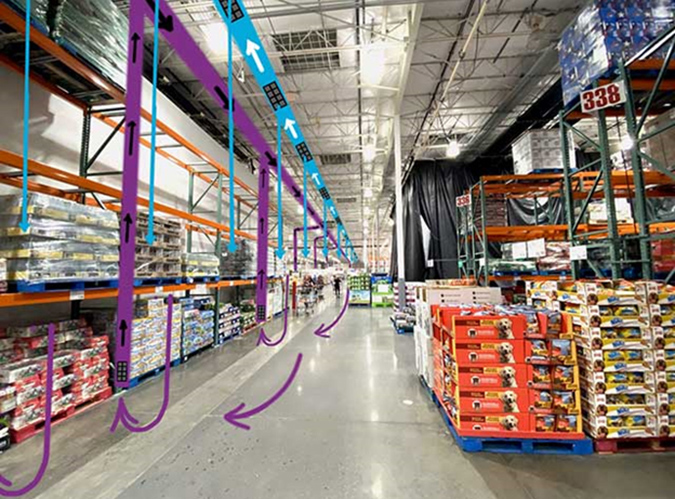
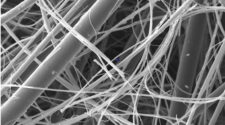
![Figure 1: Heat Exchanger Proventics GMBH.[22]](https://www.filtnews.com/wp-content/uploads/IFN_2_2024_crimpedmicrofiberyarns_Fig.-1-Heat-exchanger-225x125.jpg)

